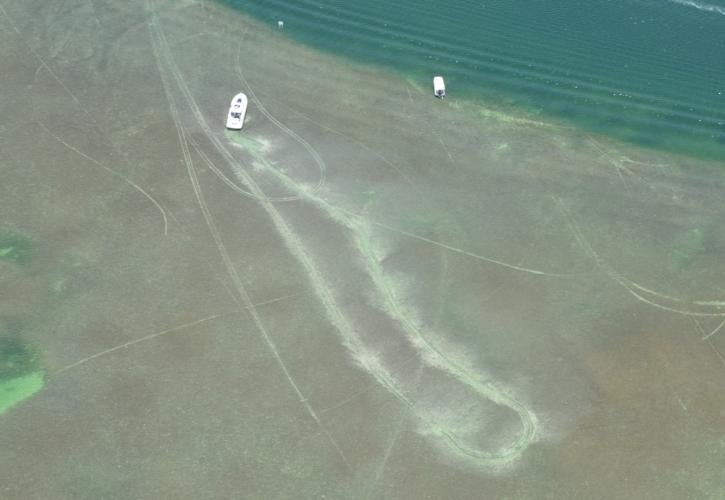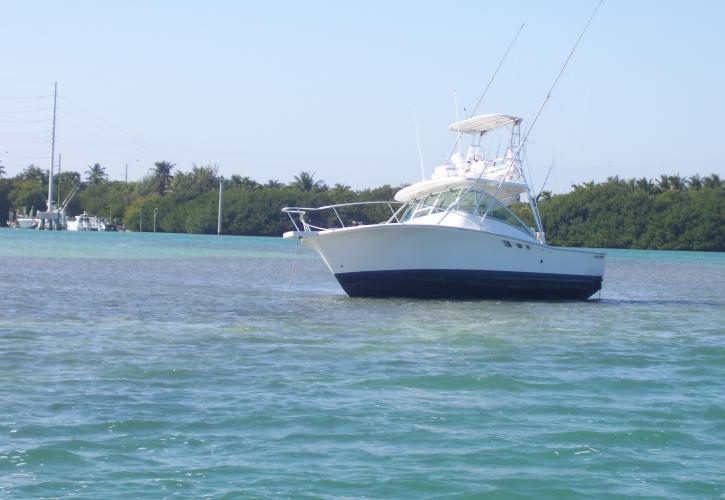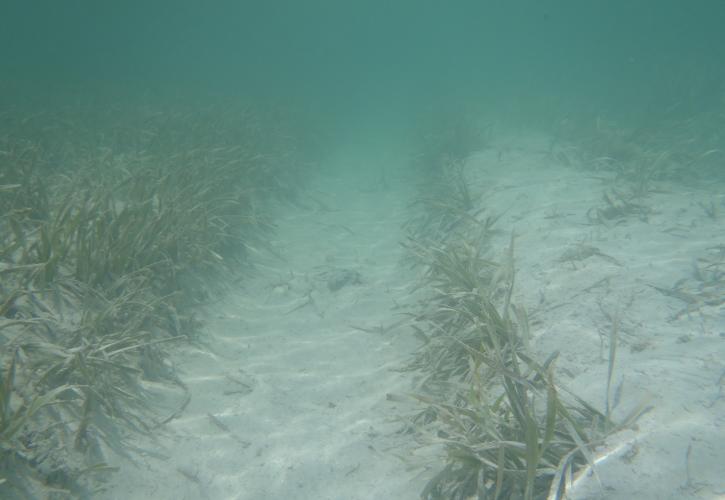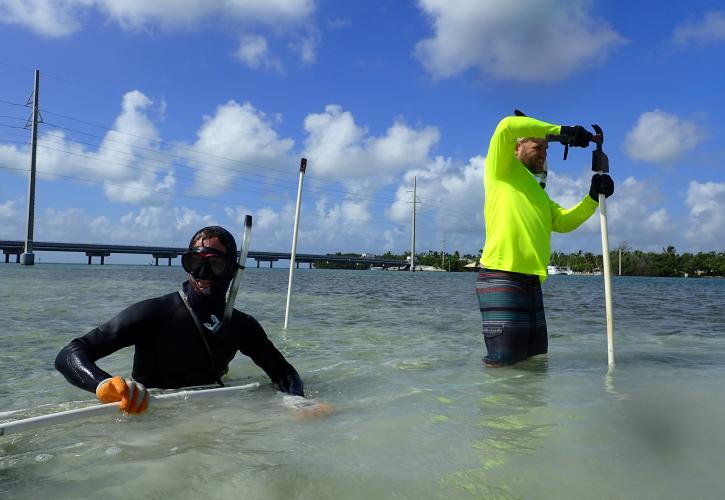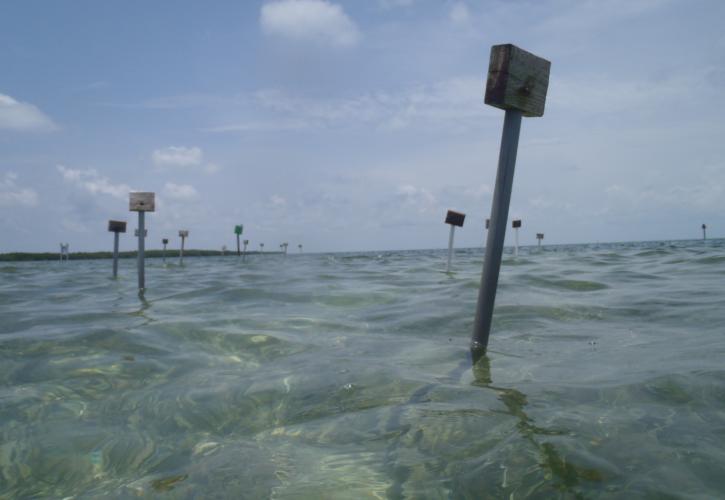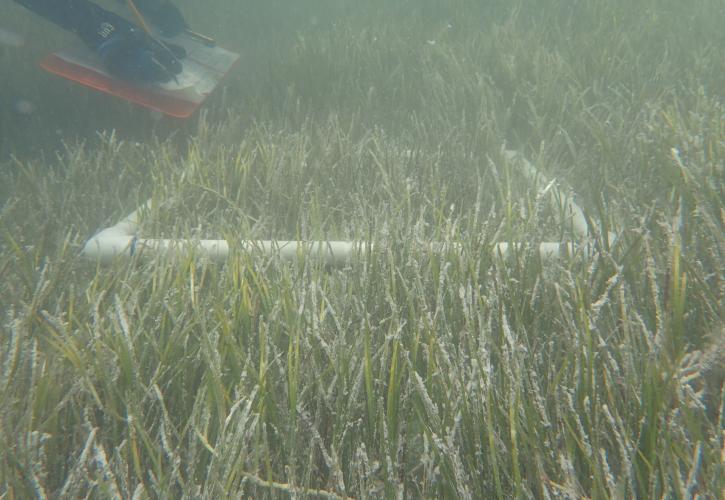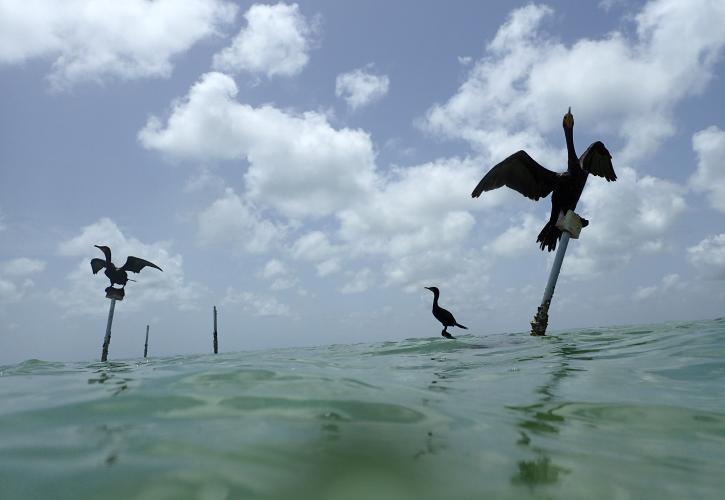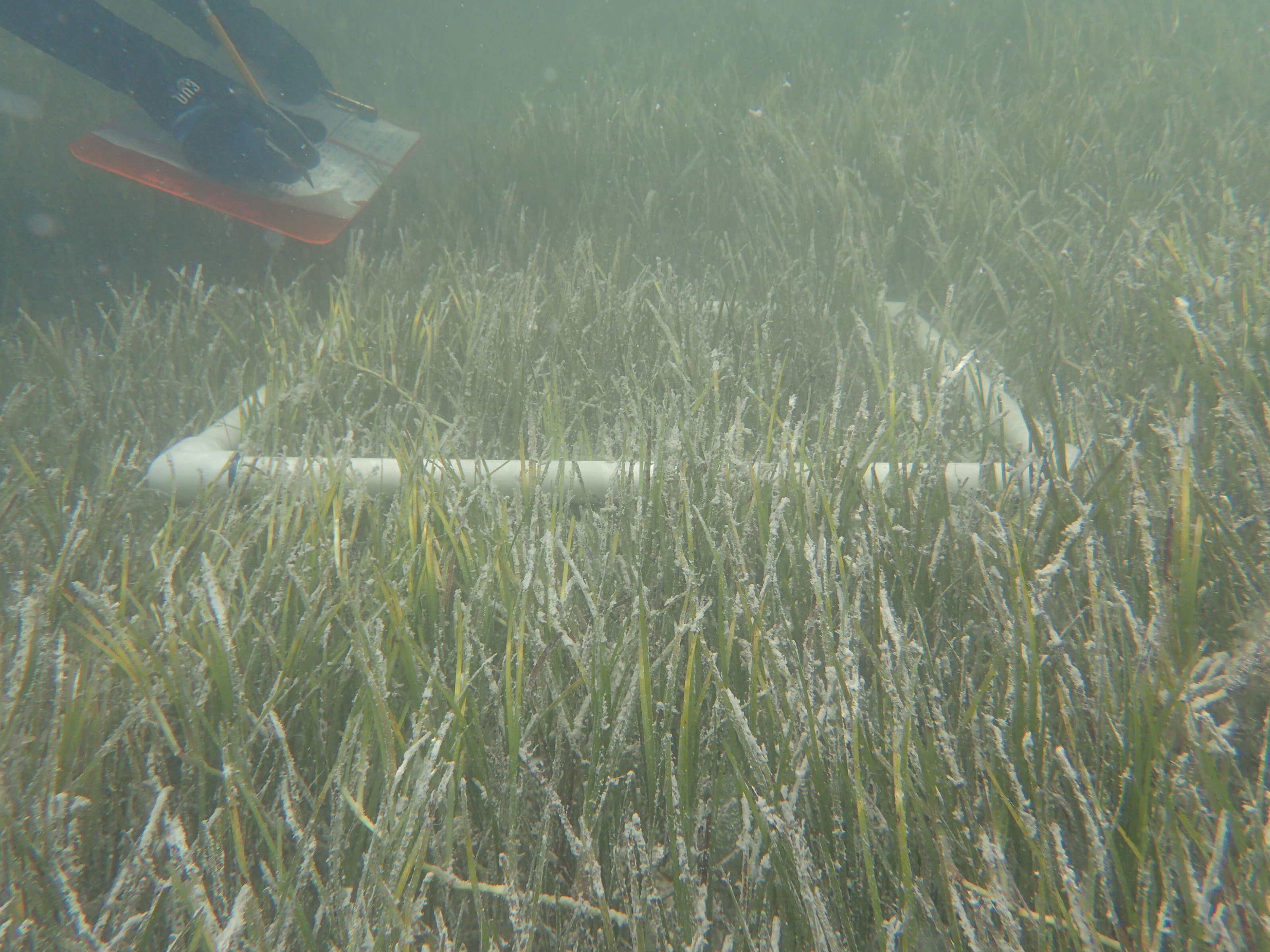
Seagrass Restoration at Indian Key
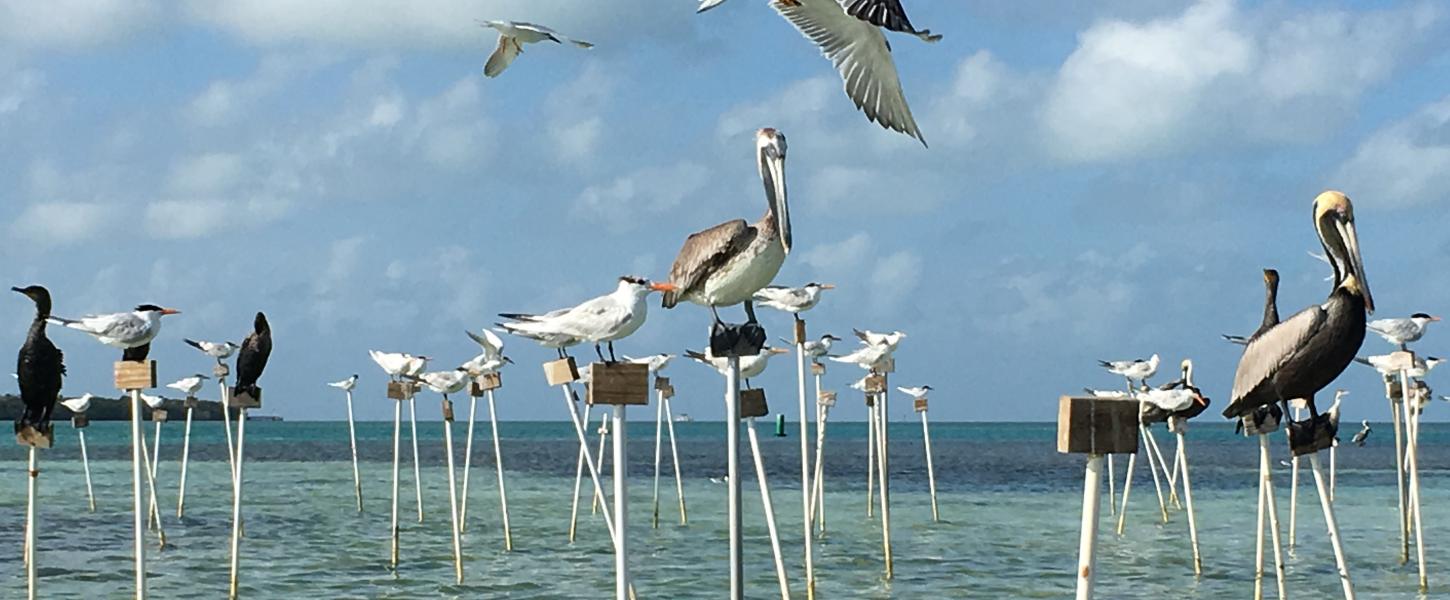
The island of Indian Key is surround by a healthy seagrass bed brimming with sea life. Most visitors kayaking to the island float over this wonderful resource and can spot myriad creatures hiding among the blades of grass. Sharks, sea turtles, rays and many different fish and crustaceans inhabit the grass flats and can be seen by visitors paddling to the island.

The dominate seagrass in the area, called turtle grass, is a favorite food of the green sea turtle. Green sea turtles have a serrated beak, so they can easily cut through the grass and algae that make up the bulk of their diet. During grazing, the seagrass’ underground stems - or rhizomes - remain unharmed, allowing the grass to regrow.
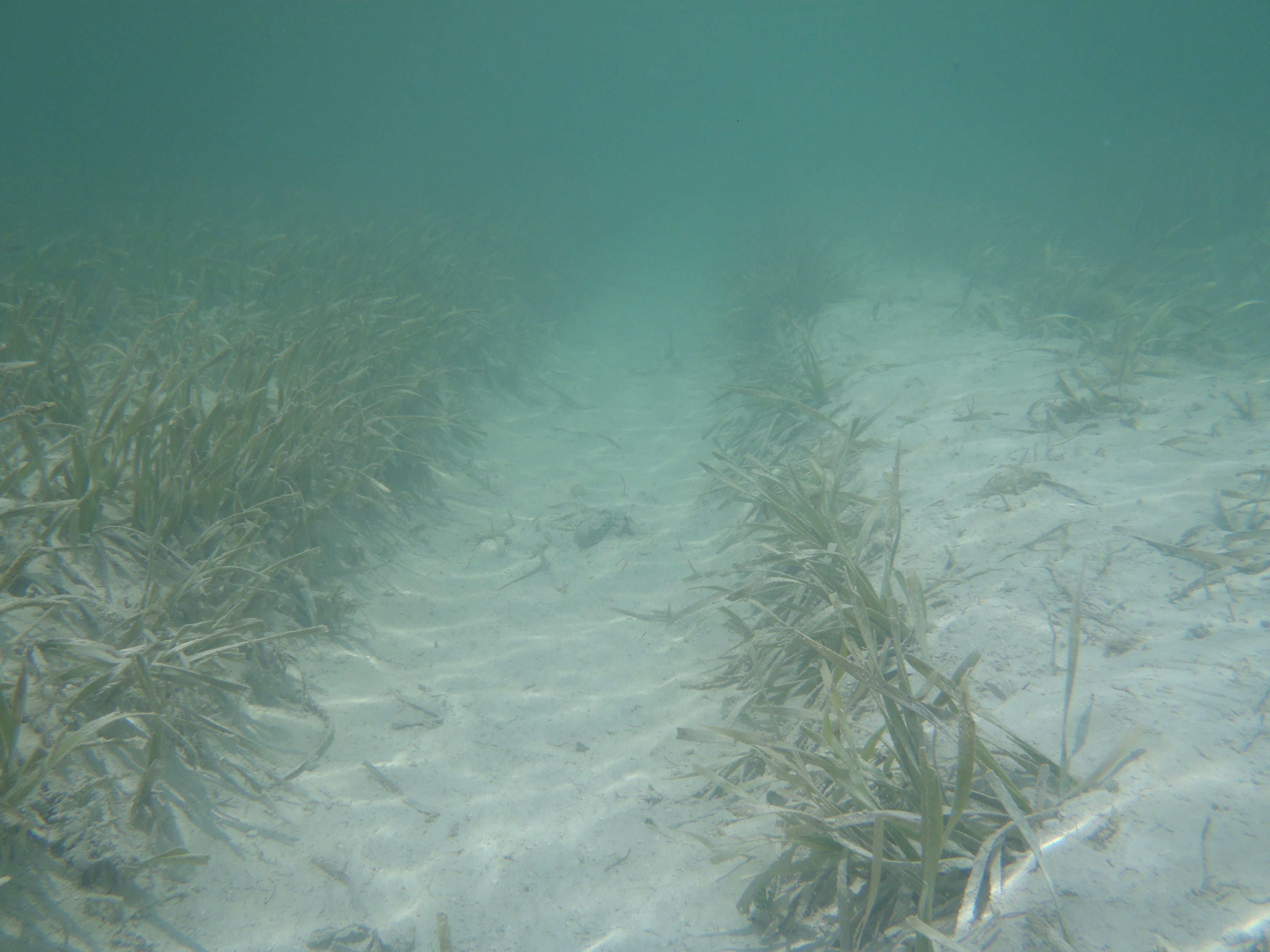
One of the biggest threats to this natural resource is from damage by careless boaters traveling through park waters. When a boat propeller cuts through the seagrass rhizomes exposing the substrate, it can leave a prop scar behind. The rhizomes are especially important for holding underlying sediments in place. Once the sediments are exposed to the tides, they can become unstable and erode, causing more damage to the surrounding seagrass.
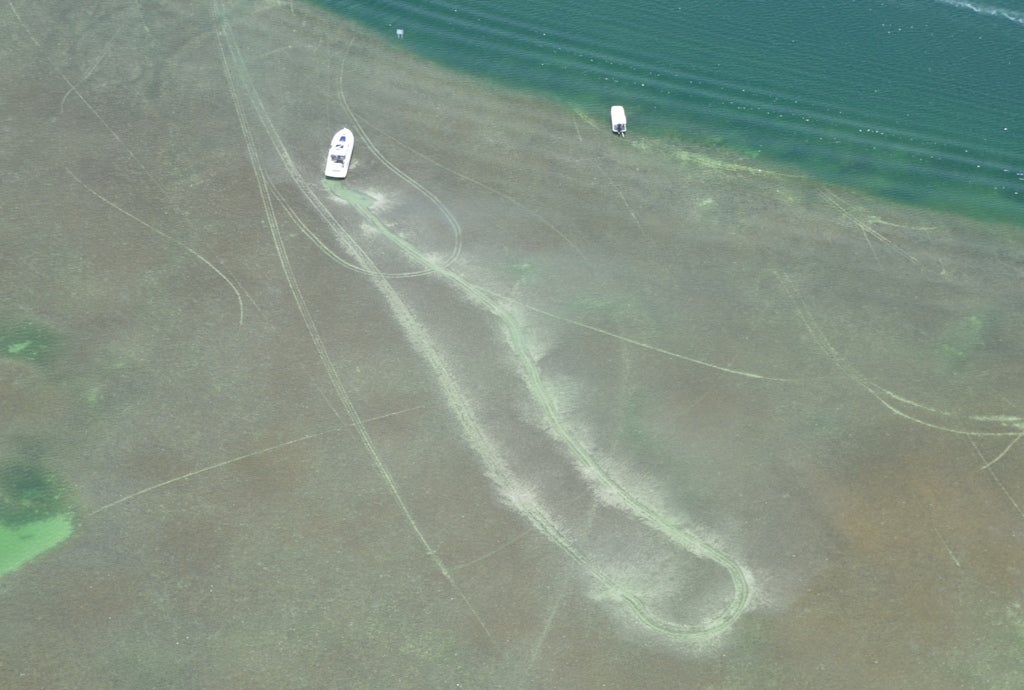
When a boat-related injury occurs, park staff must leap into action to access and stabilize the damaged area to control erosion and minimize impacts to the surrounding seagrass bed. If necessary, rocks can be used to level the scar, and bird stakes are placed in the injury to help the seagrass recover more quickly.
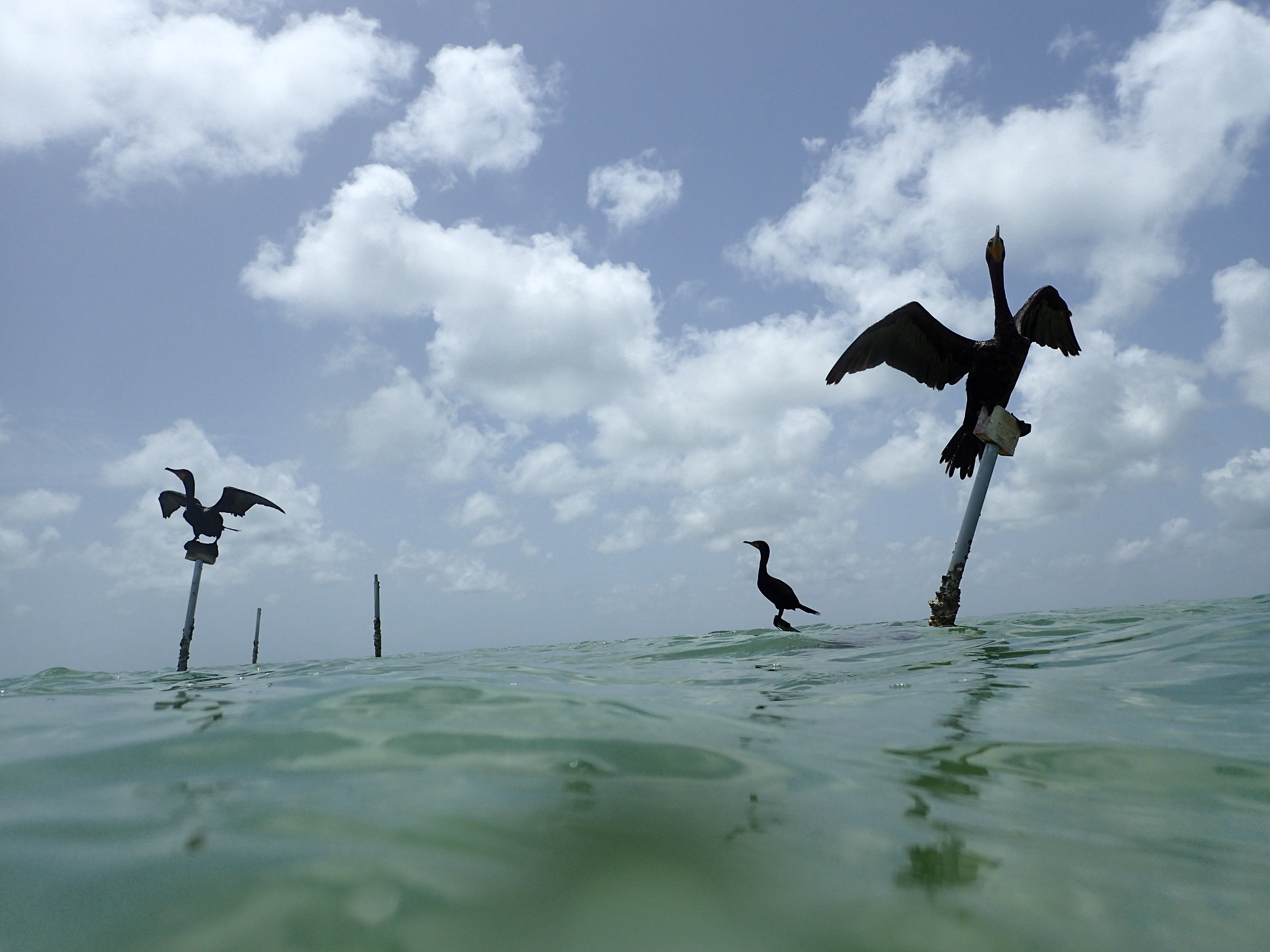
A variety of seabirds including cormorants, osprey, terns, gulls and pelicans help fertilize the grass with their waste products when resting on the wooden blocks adhered to the top of the PVC stakes. The fertilizer encourages the regrowth of the seagrass which in turn stabilizes the sediments. Visitors will be able to see several restoration sites on their way to Indian Key.
Park staff want to remind all visitors to stay in the marked channels if traveling to the island by powerboat and to please stay in deep water to avoid damaging the valuable seagrass beds.
Seagrass Restoration Gallery
